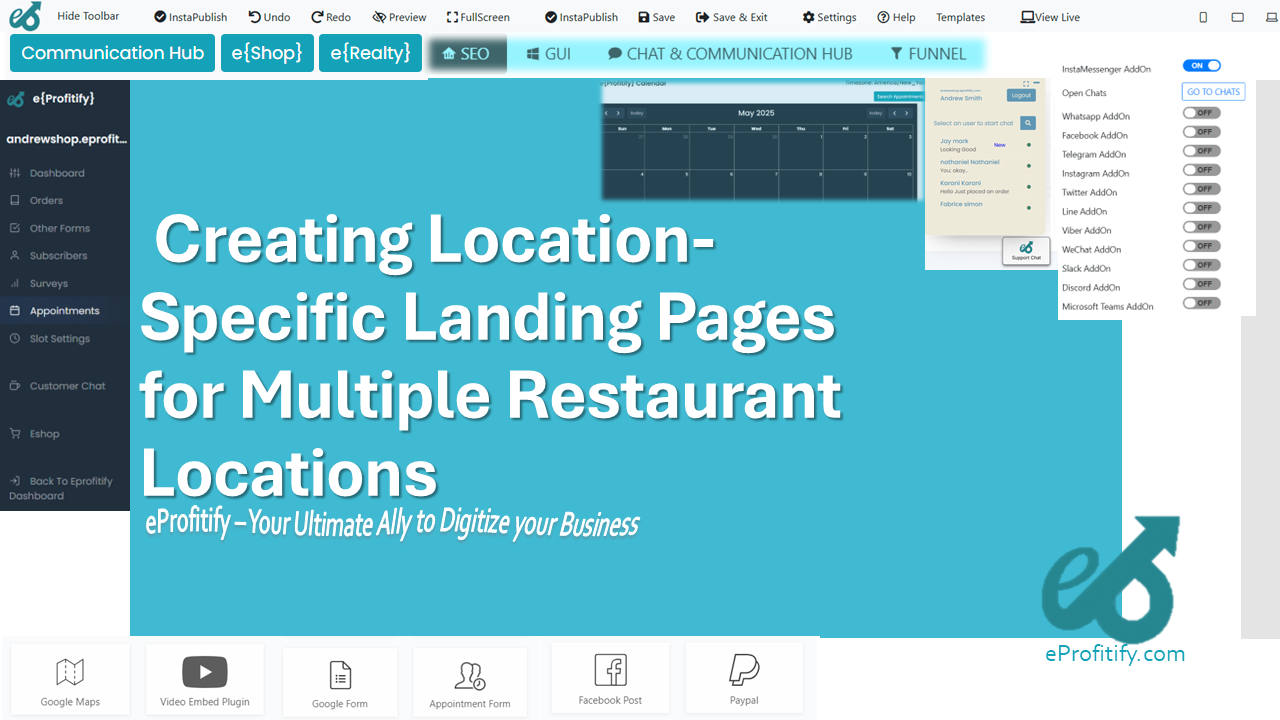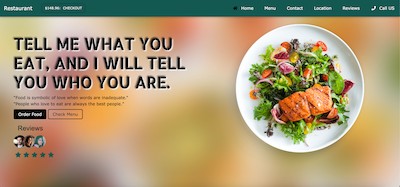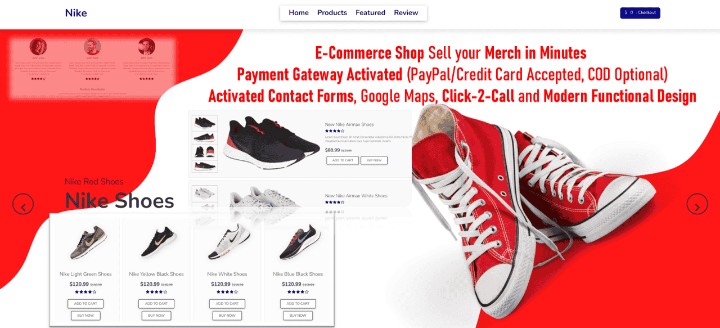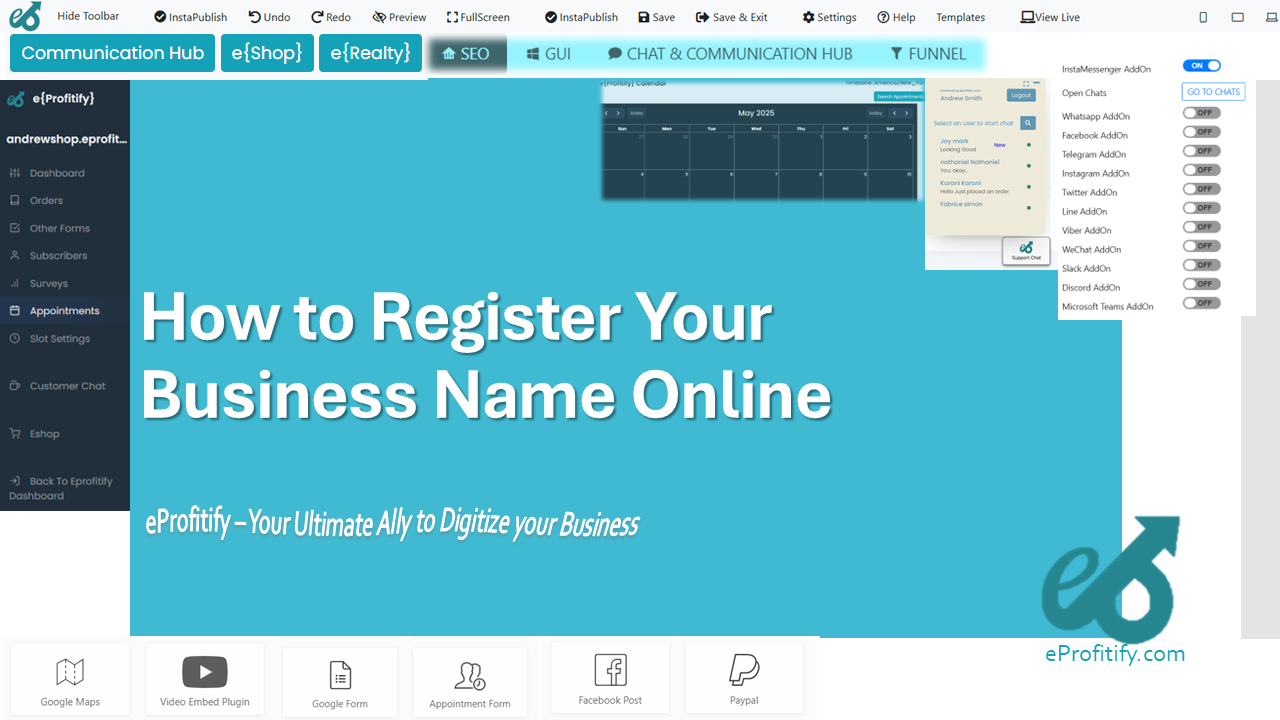Creating Location-Specific Landing Pages for Multiple Restaurant Locations

Creating Location-Specific Landing Pages for Multiple Restaurant Locations: Strategies, Benefits, and Tools
In today’s digital-first world, restaurants with multiple locations face a unique challenge: standing out in local searches while maintaining a cohesive brand identity. As consumers increasingly rely on search engines and mobile devices to discover dining options—72% of "near me" searches lead to in-store visits within five miles—businesses must prioritize localized online experiences. Location-specific landing pages are critical for connecting with hyper-targeted audiences, improving visibility, and driving foot traffic. This article explores how to create effective location pages, backed by data, and highlights Eprofitify, a leading website management platform that streamlines localized marketing through tools like CRM, ecommerce, and instant messaging.
Why Location-Specific Landing Pages Matter
-
Local SEO Dominance
With 46% of all Google searches seeking local information, optimizing for geo-specific keywords (e.g., “best pizza in Chicago” or “vegan cafe Miami”) is non-negotiable. Location pages help restaurants rank higher in local searches, especially when integrated with Google My Business (GMB) listings. According to BrightLocal, 88% of consumers trust online reviews as much as personal recommendations, making localized review management another key factor. -
Enhanced User Experience
Visitors expect immediate, relevant information. A generic website forces users to hunt for location details, but tailored landing pages provide:- Address, hours, and contact info
- Location-specific menus or promotions
- Directions and parking instructions
- Local events or partnerships
-
Higher Conversions
Personalized CTAs like “Order Online” or “Book a Table” drive action. For instance, 78% of location-based mobile searches result in in-person visits, and pages optimized for local intent can boost conversion rates by up to 40%.
Steps to Create Effective Location-Specific Landing Pages
-
Conduct Local Keyword Research
Use tools like Google Keyword Planner or SEMrush to identify location-based search terms. For example, “brunch downtown Austin” or “gluten-free bakery Portland.” -
Craft Unique, Hyper-Local Content
Avoid duplicating content across pages. Highlight unique offerings:- Seasonal dishes exclusive to a location
- Staff bios or chef specialties
- Community involvement (e.g., sponsoring local sports teams)
-
Optimize On-Page SEO Elements
- Include location in title tags (e.g., “La Dolce Vita | Italian Restaurant in San Diego”)
- Embed Google Maps
- Add schema markup to help search engines understand geographic relevance.
-
Prioritize Mobile Optimization
60% of restaurant searches occur on mobile devices. Ensure pages load quickly, use responsive design, and simplify navigation. -
Integrate Reviews and Testimonials
Showcase local customer feedback to build trust. Encourage diners to leave reviews on GMB or Yelp. -
Include Clear CTAs
Tailor calls-to-action to each location:- “Order Takeout” linked to a local delivery service
- “Reserve a Table” connected to the location’s booking system
Challenges in Managing Multiple Location Pages
While location pages are powerful, scaling them poses challenges:
- Time-Consuming Updates: Updating menus or promotions across dozens of pages manually is inefficient.
- Brand Consistency: Balancing localized content with unified branding (e.g., logos, colors) requires vigilance.
- Technical Complexity: Managing local SEO, mobile optimization, and analytics for multiple pages can overwhelm teams.
Eprofitify: Streamlining Multi-Location Management
Eprofitify emerges as a game-changer for restaurants juggling multiple locations. Its all-in-one platform offers tools designed to automate and simplify localization:
-
Centralized CMS with Localization
Create and manage location pages from a single dashboard. Use templates for consistency while customizing content (menus, events) per location. -
Instant Messaging and Chatbots
Embed live chat or AI-driven chatbots on each landing page to answer FAQs (e.g., “Do you have vegan options?”) or resolve complaints instantly, improving engagement. -
Appointment Management
Sync each location’s reservation system with its landing page. Diners can book tables directly, reducing no-shows with automated reminders. -
Integrated Ecommerce
Enable online ordering with location-specific menus. Payments are processed securely, and orders route to the correct kitchen. -
CRM for Personalized Marketing
Track customer behavior (e.g., frequent orders, dine-in history) to send geo-targeted promotions (e.g., “Enjoy 20% off at our Brooklyn location this weekend!”). -
Analytics and Reporting
Monitor each location’s performance with real-time data on traffic, conversions, and revenue. Identify weak performers and optimize strategies.
Conclusion
For multi-location restaurants, localized landing pages are essential to capture nearby customers and compete in crowded markets. By combining strategic SEO, personalized content, and mobile-friendly design, businesses can turn browsers into diners. Platforms like Eprofitify elevate this process by consolidating critical tools—CRM, ecommerce, chatbots, and analytics—into a single ecosystem, empowering brands to scale efficiently while delivering tailored experiences. In an industry where 76% of diners visit a restaurant’s website before dining, investing in location-specific pages managed through Eprofitify isn’t just smart—it’s vital for survival.
By leveraging data-driven strategies and robust tools, restaurants can ensure every location thrives, both online and offline.








